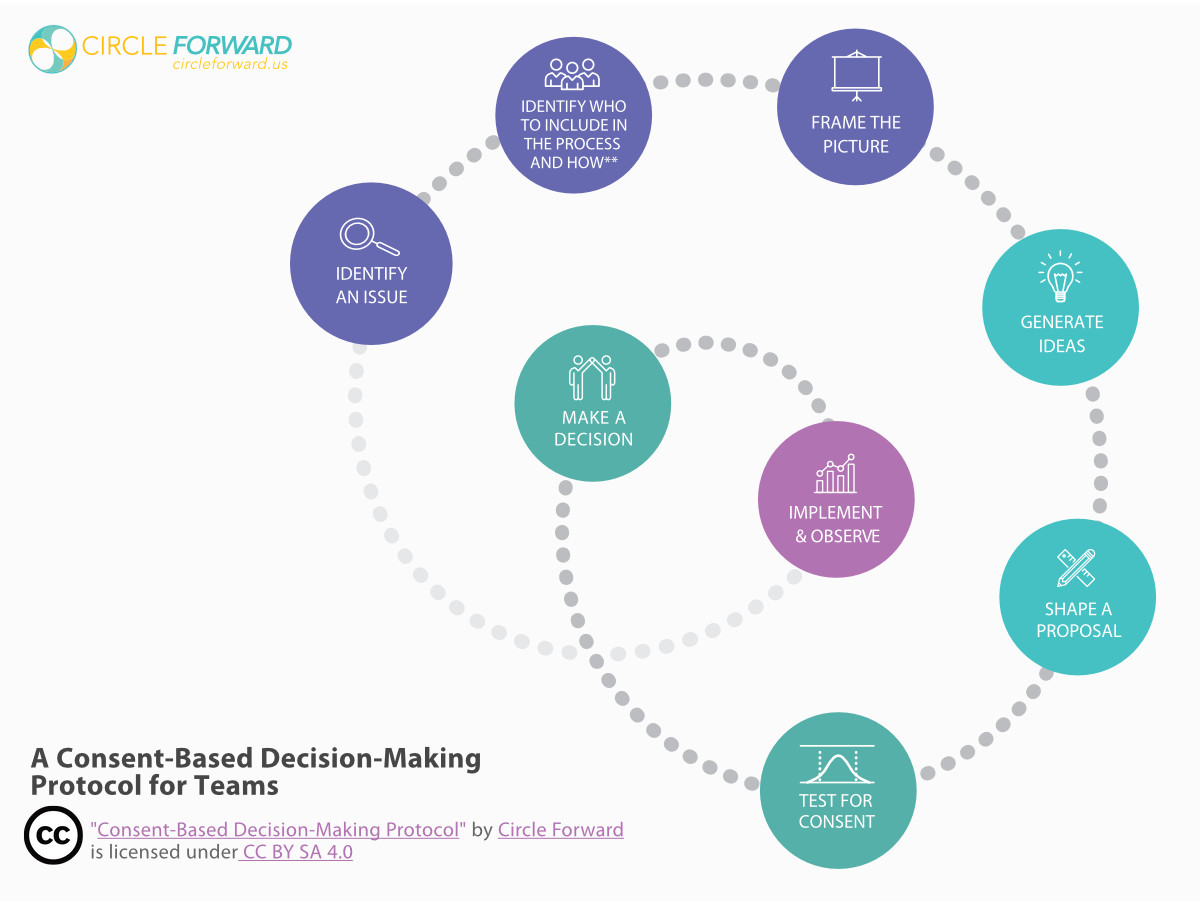Consent in Practice
People who were not bought in on a decision can withhold their support and actively or passively resist it. Future opportunities can be lost when trust or relationships are sacrificed.
At the same time, getting everyone “to the table,” is usually impractical. So, a single decision-maker or small team finds other ways to include voices and shape proposals for action, by testing for consent throughout the process.
We co-designed the Consent Protocol as a guide.
Our Consent Protocol is designed with the wisdom of legions of community organizers, who take time up front to build relationships and trust.
Decision-makers can save time in the short run by ignoring when people are out of their range of tolerance — but pay many times over in the long run.
Using the Consent Protocol efficiencies can be found elsewhere:
-
- Once a high-level decision is made, circles can delegate autonomous decision-making and authority to individuals and teams around issues.
- Members do not need to debate or persuade other members to minimize their objections. Debate is often more about winning than about wisdom. Using dialogue as a method of discourse, which is more about learning, teams can wisely adapt its decisions and keep moving. Often, what is learned for one issue, can be applied over and again in subsequent conversations.
- When people know their concerns will be accounted for, they are likely to develop trust. Trust has been demonstrated in the research to reduce “transaction costs” over time.
By Consent, circle members:
-
-
- Can choose to adopt any practice or process that enables them to make their decisions and carry them out.
- Can choose to use forms of decision-making other than consent, as long as:
- Can empower leadership roles and select the people who fill them.
- Can take individual, autonomous initiative, and/or form action teams, work groups, or communities of practice.
-
Sometimes consent leads people to choose a less intense level of collaboration together.
People collaborate on shared aims: promises of value to be delivered. Using consent, an objection would be in relation to the ability to meet aims.
In truth, if our aims are sufficiently different, we will have a hard time finding consent, since we are moving toward different objectives. In that case, people and teams may cleave and re-form in different constellations that align with common aims. We make decisions together at the level of our common aims.

